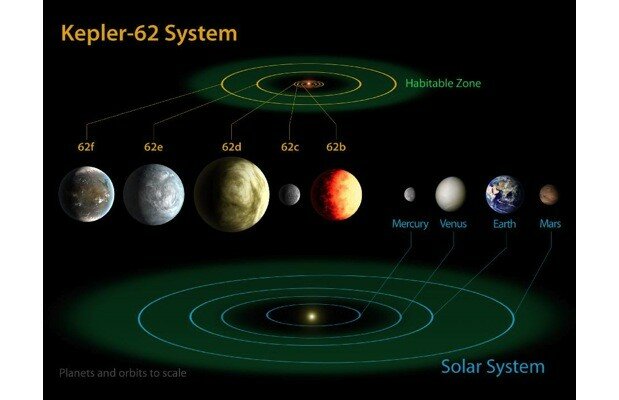The biggest question that has been bothering us since our very existence is that are we alone in this universe. This question alone has made us work extremely hard to learn about the universe and unveil its secrets. The universe is so vast that it is almost impossible that we will ever be able to discover and study all of it however the search for Earth like planets that could have life on them is on and we have been searching for this answer for a long time.
Now NASA has found three super earth sized exoplanets thanks to its Kepler Telescope. The planets are called Kepler-62e, Kepler-62f and Kepler-69c. Whats so special about these three planets is that they are found within the habitable boundaries of their solar systems and are not too close or too far from their star. Due to this these planets are possibly suitable to have water in them thus increasing the chance of having life.
The Kepler 62e and Kepler 62f orbit around K2 dwarf which is estimated to be around 7 billion years old. The star or sun of this solar system is sized at two-thirds of our sun. This solar system has a total of 5 planets revolving around the sun out of which 3 are in habitable zone.
Out of the three planets Kepler-69c is the largest is size and according to estimates it is 70 percent largest then the Earth we live in. It completes its one cycle around the sun in 242 days. Other two planets are smaller in size than the Kepler-69c but they are still larger than our Earth. NASA is using the term “Super Earth” for them due to their large size.
It is important to note that just because these planets have Earth like characteristics and are find in habitable zones of their solar systems they have some kind of intelligent or non-intelligent life in them. Also scientists are not denying the possibility of life’s existence on planets that are different from Earth or are found revolving around stars different from ours.
Launched in 2009 Kepler Mission of NASA is on a roll as it has discovered 2,740 planets as of January since its launch into space.







